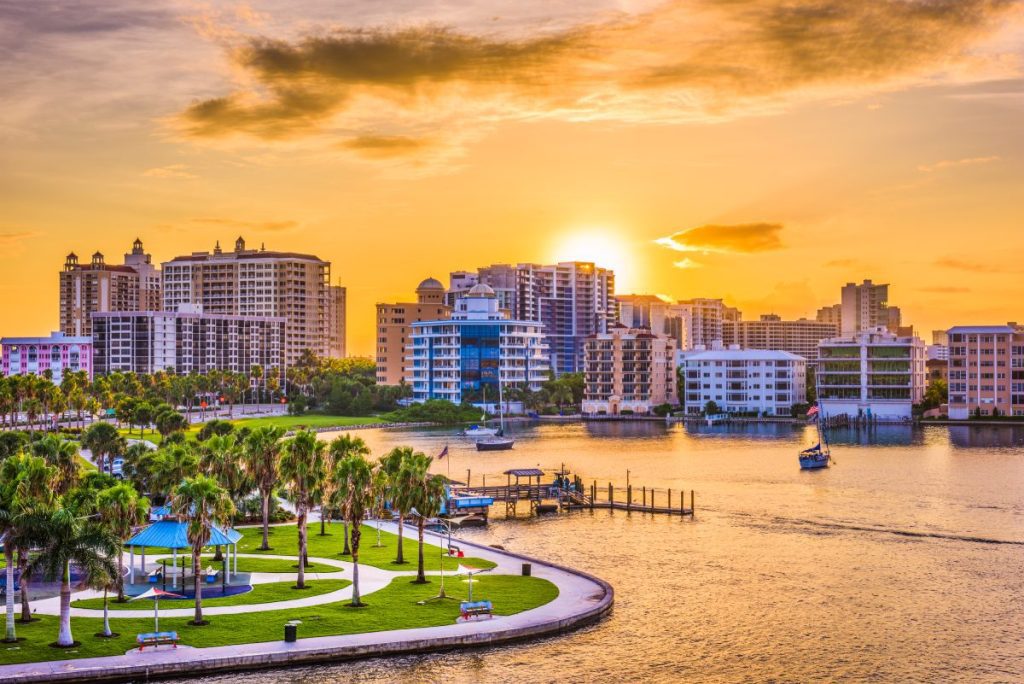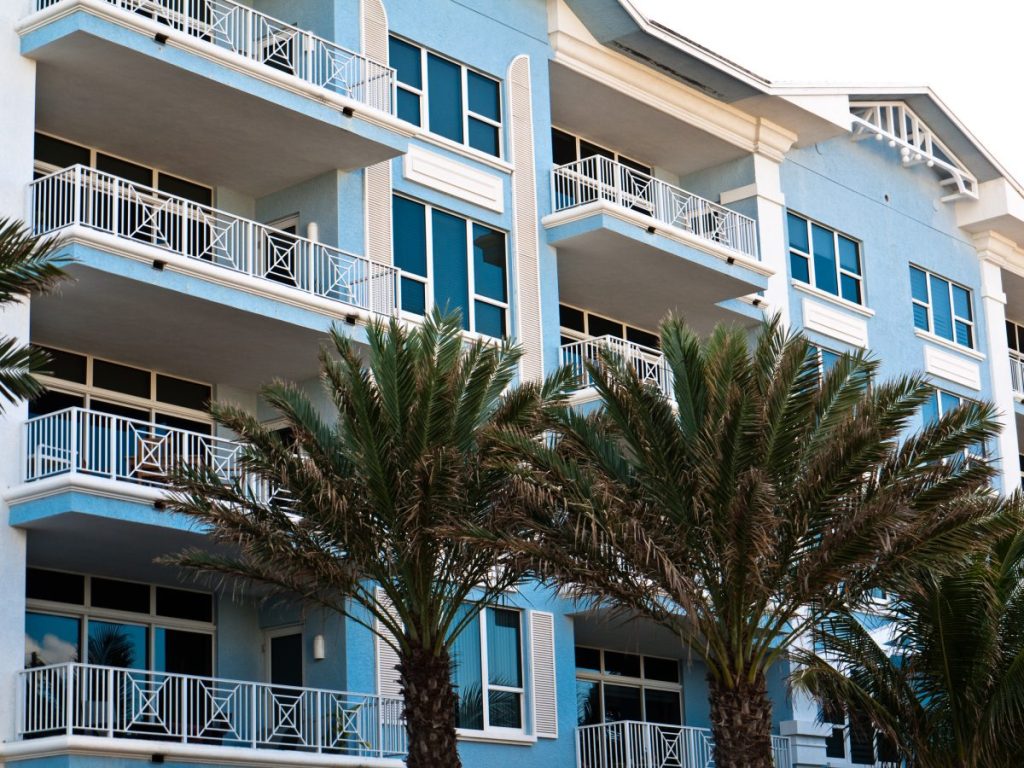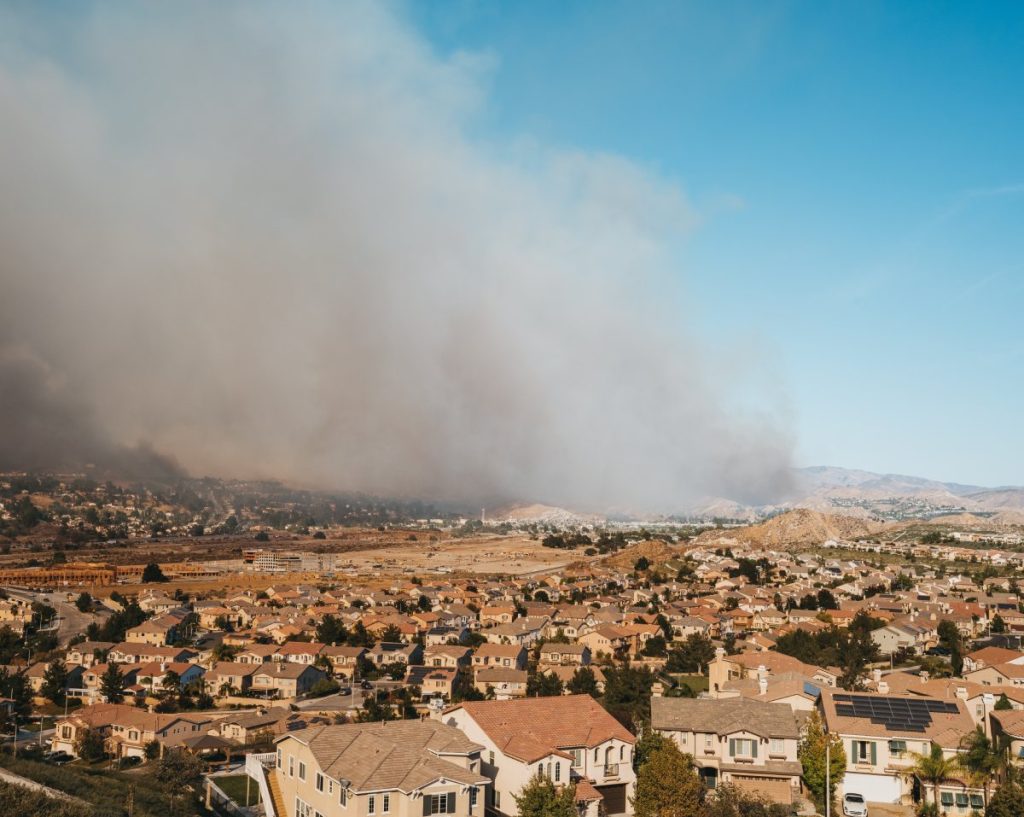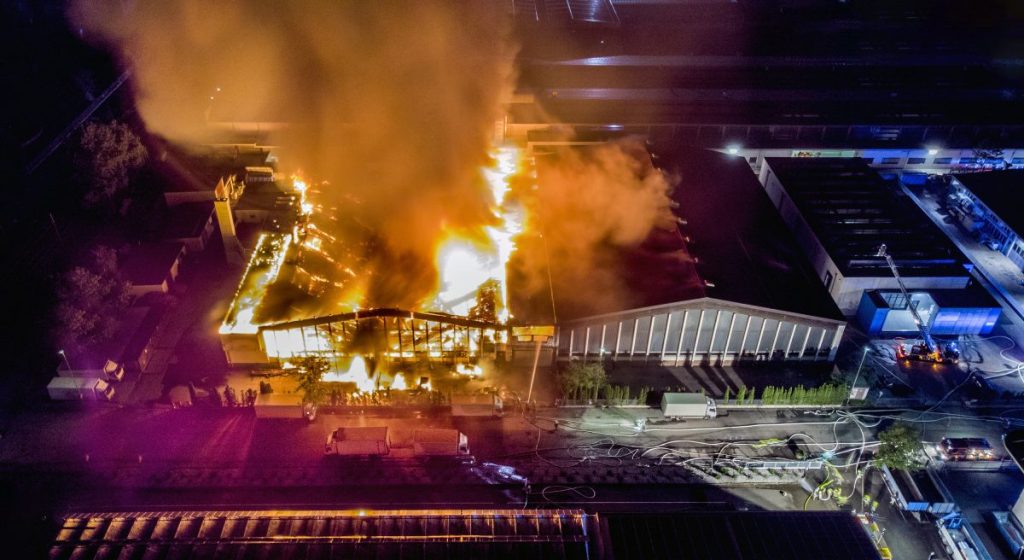Every year, countless business owners believe their insurance will shield them from disaster, only to learn the hard way that coverage gaps and fine-print language have left them exposed.
Commercial property and casualty insurance (or “P&C insurance,” as it’s often abbreviated) is marketed as a safety net for business owners: it’s supposed to shield you from liability claims against your business and protect your buildings, equipment, and operations from fire, theft, and storms.
But the reality is more complicated. Beneath the promising labels lie myriad exclusions, sub-limits, and conditional triggers that insurers use to limit their exposure.
Since 1985, Merlin Law Group has been at the forefront of insurance litigation, representing commercial property owners who have been wronged by delayed, denied, or underpaid claims. We fight so you don’t bear the cost of the fine print.
In this article, we’ll peel back the layers to reveal what commercial P&C insurance covers and what it doesn’t. We’ll explore how “all-risk” policies can still leave you exposed, how sub-limits quietly chip away at your protection, and how policy language and claims procedures can make or break your recovery.
What Exactly Is Property and Casualty Insurance?
Property and casualty (P&C) insurance is a broad category of coverage designed to protect businesses from two major financial risks:
- Damage to physical property you own (i.e., your buildings, equipment, inventory, and other physical assets)
- Liability for harm caused to others (such as injuries that happen on your premises or damage your operations cause to someone else’s property)
For commercial policyholders, a P&C policy is often bundled as a package that combines multiple forms of coverage. The property side protects your tangible assets from events like fire, theft, windstorms, or vandalism. The casualty side—sometimes referred to as liability insurance—offers liability protection for your business from claims that you caused injury or damage, whether to a customer, visitor, tenant, or neighboring business.
Commercial P&C insurance is the foundation of your risk management strategy, but it isn’t a blanket guarantee. Understanding exactly what falls under “property” and what constitutes “casualty” is the first step in identifying gaps that could expose your business when disaster strikes.
Property Coverage Explained
Property insurance is about resilience: it ensures that when a disaster strikes, your physical assets—your space, equipment, and goods—can be repaired or replaced, allowing you to get back to business. The types of property protected by property coverage typically include:
- Buildings and Structures: This is the most obvious asset: the physical structure of your office, warehouse, storefront, or manufacturing plant. Property coverage helps pay for repairs or rebuilding if this is damaged by a covered peril.
- Business Equipment and Machinery: This is machinery, tools, and other business-related equipment.
- Inventory and Stock: This encompasses goods and supplies, ranging from merchandise on a retail floor to raw materials awaiting production.
- Business Personal Property: This includes furniture, fixtures, and other items that are not permanently attached to the building.
Most commercial property policies cover a list of “named perils.” Standard covered perils include:
- Fire and Smoke Damage: This is one of the most common and financially devastating risks for businesses.
- Theft and Vandalism: This is protection when equipment, inventory, or other property is stolen or deliberately damaged.
- Wind and Hail: This is especially critical in coastal states like Florida and California, where hurricanes and other natural disasters can wreak havoc on buildings and their contents.
- Explosion or Burst Pipes: These events can cause major damage quickly, often resulting in both property damage and business interruption.
Casualty Coverage Explained
Casualty coverage, also known as liability insurance, protects your business from legal responsibility for harming others. This can include:
- General Liability: This coverage is for medical expenses and legal fees in the event a customer is injured on your premises, such as in a slip-and-fall incident.
- Property Damage to Others: This covers your business against damage it may cause to another person’s property.
- Product Liability: This protects against claims if a product your business manufactures or sells causes injury or damage.
- Professional Liability: Also known as Errors & Omissions (E&O) insurance, this protects against mistakes made in professional services.
- Cyber Liability: This coverage protects against losses resulting from data breaches or other cyber threats.
- Workers’ Compensation: While often a separate policy, this is a type of casualty insurance that covers medical costs and lost wages for employees injured on the job
General liability is the workhorse of casualty coverage. Suppose you run a retail clothing store, and one rainy afternoon, a customer slips on the tile floor near the entrance, fractures his wrist, and sues your business for medical bills, lost wages, and pain and suffering. Without these types of insurance, you could face tens of thousands of dollars in legal fees and settlements. General liability insurance can pay for your legal defense and any damages, protecting both your finances and your reputation.
The “All-Risk” Illusion: Uncovering Hidden Exclusions
Insurance companies understand that the phrase “all-risk” provides people with peace of mind. Business owners often assume this umbrella of coverage shields them from nearly every conceivable loss. In reality, the scope is defined by carefully drafted terms and exclusions.
For example, your property coverage may pay for repairing structural damage after a storm, but exclude the resulting business interruption losses unless you’ve purchased that endorsement. Similarly, liability coverage may protect you if a customer slips in your lobby, but it typically carves out exclusions for professional errors or employment-related disputes.
An all-risk policy (sometimes called “open perils”) promises coverage for any loss unless the policy specifically excludes it. However, even the broadest all-risk policy contains numerous exclusions, sub-limits, and conditions. These carve-outs often leave gaps big enough to expose your business to devastating financial loss. The insurance industry markets these policies as comprehensive, but when disaster strikes, the fine print often reveals a different story.
Let’s consider some of the most common exclusions hidden in commercial all-risk policies.
Flood and Water Damage
Understanding exactly what you get with different types of coverage is crucial to ensuring you’re not left with massive out-of-pocket costs.
For instance, not all water damage is treated equally in commercial P&C coverage (or in homeowners insurance policies, for that matter). A burst pipe that floods your office overnight? That’s usually covered. But rising floodwaters from a hurricane storm surge or water backing up through a city sewer system? Those losses are typically excluded.
As many homeowners have discovered too late, business owners must purchase separate flood or sewer backup coverage, which is often federally backed or sold through specialty insurance providers.
Earth Movement
Standard commercial property policies almost always exclude losses caused by earthquakes, landslides, and sinkholes. These risks are considered uninsurable under a general “all-risk” form and require separate coverage or state-backed policies in certain regions. Courts have consistently upheld these exclusions, often pointing to the policy’s precise definition of “earth movement.” For example, after a sudden sinkhole damaged a warehouse, the insurer successfully denied the claim on the grounds that the peril fell under an explicit exclusion, leaving the business to shoulder millions in repair costs on its own.
Ordinance or Law
This exclusion often surprises policyholders. If your building is damaged, your insurer may agree to cover repairs—but not the additional costs required to bring the property up to current building codes. Imagine a fire damages half of a warehouse you own. Local code now requires the entire electrical system to be replaced and the building outfitted with sprinklers. Without an ordinance or law endorsement, the insurer can deny coverage for these costly upgrades, leaving you liable to pay the difference.
Business Interruption Triggers
Business interruption coverage can be a lifeline after a disaster, but the triggers for coverage are narrower than many realize. Most policies require direct physical damage to the insured property before benefits kick in. That means a restaurant forced to close due to a mandatory evacuation or a factory shut down because of a supplier’s fire may not qualify for coverage. During the COVID-19 pandemic, for example, numerous businesses discovered that their interruption claims were denied because the closures resulted from government orders, rather than physical damage to their own premises.
Sub-Limits: When “Covered” Doesn’t Mean Fully Covered
Even when a loss is technically “covered” under your property and casualty policy, that doesn’t guarantee you’ll receive the full benefit you expect. That’s because many policies include sub-limits: built-in restrictions that cap how much the insurer will pay for certain categories of loss.
Think of sub-limits as fine print within the fine print. Your policy might advertise a $5 million overall limit, but when it comes to categories like flood damage, debris removal, or business interruption, the payout could be capped at a fraction of that amount—sometimes as low as $25,000 or $50,000.
For business owners, these hidden ceilings can mean the difference between a manageable setback and a financial disaster. Let’s explore some of the most common sub-limits that catch commercial property owners by surprise.
Pollutant Cleanup and Removal
Many commercial policies advertise generous overall coverage limits, but when it comes to environmental hazards, the protection can shrink dramatically. In industries where spills can trigger extensive regulatory oversight and remediation requirements, an insufficient sub-limit—as in the flood damage example above—can barely scratch the surface of real-world costs.
Data Recovery
For today’s businesses, data is often as critical as physical inventory. But standard commercial property policies often treat electronic data losses as an afterthought, with very low sub-limits for recovery. If a server crash, cyber incident, or fire destroys customer databases or financial records, the policy might only pay a nominal amount: far less than what it would cost to restore systems, hire forensic IT specialists, or rebuild digital infrastructure.
Valuable Papers and Records
Commercial operations still depend heavily on physical records and specialized documents—from blueprints and contracts to medical files and architectural plans. Reproducing these documents after a loss is rarely cheap, yet many policies impose strict sub-limits on valuable papers coverage. A policyholder may find that the reimbursement offered is only a small fraction of the actual cost of re-creating critical records necessary to resume operations.
Impact on Businesses
The danger with sub-limits is that they create a false sense of security. A business may carry a policy with millions in overall protection, only to find that the losses most likely to occur—such as cleanup, data recovery, or code upgrades—fall under narrow caps. In the short term, this translates into unexpected out-of-pocket costs that can stall repairs, delay reopening, or necessitate difficult choices, such as cutting staff or pausing operations. Over the long term, chronic underinsurance can erode financial reserves, weaken credit standing, and damage customer relationships if the business can’t recover quickly. In severe cases, a single disaster combined with restrictive sub-limits can threaten not only immediate profitability but also the ongoing viability of the company itself.
How Property and Casualty Insurance Policies Work: From Underwriting to Claims
Underwriting
Every policy begins with underwriting: it’s the process insurers use to evaluate risk, set premiums and coverage terms, and provide you with an insurance quote. Insurers consider factors such as your property’s location, construction type, occupancy, and past loss history. The more risk they perceive, the higher your premiums and the stricter your terms may be. For business owners, it’s critical to provide accurate and thorough information during this stage. If misstatements are discovered later, an insurer may attempt to void or restrict coverage right when you need it most.
The Claims Process
When a loss occurs, the claims process determines whether and how you’re paid. Typically, a policyholder must:
- Notify the insurer promptly of the loss.
- Document all damage with photos, records, and receipts.
- Submit a sworn proof of loss detailing the extent of the damage.
From there, the insurer investigates—often sending adjusters, engineers, or consultants to assess the claim. This is where disputes frequently arise. Policyholders may view damage as covered, while insurers point to exclusions, sub-limits, or technical interpretations of the policy language to reduce or deny payment.
Why Policy Language Matters
In commercial insurance, every word counts. Courts have repeatedly ruled that the meaning of a single phrase can decide whether coverage applies. For example, in Pan Am Equities, Inc. v. Lexington Insurance Co. (2020), the Fifth Circuit appellate court held that the wording of the business’s windstorm deductible meant that damages caused during Hurricane Harvey were caused solely by “flooding,” which wasn’t covered. That single definition transformed what seemed like a straightforward water damage claim into an excluded peril, resulting in millions of dollars in unreimbursed losses for the business.
So remember: your protection is only as strong as the language on the page. Knowing how underwriting, claims handling, and policy interpretation interact can mean the difference between a successful claim and a costly denial.
Merlin Law Group: Your Ally in Coverage Disputes
The promise of “all-risk” coverage is appealing, but as we’ve seen, it doesn’t mean your commercial property and casualty insurance policy protects against every possible loss. Hidden exclusions and restrictive sub-limits can leave even the most well-prepared business owners with unexpected financial exposure.
The takeaway is clear: understanding the fine print of your insurance policy is as important as having the policy itself. True risk management means knowing not just what’s covered, but what isn’t—so you can plan, supplement coverage, or challenge unfair denials before they jeopardize your business.
Don’t wait until disaster strikes to discover the gaps. If you’ve suffered property damage and are fighting a delayed, denied, or underpaid claim, the attorneys at Merlin Law Group are here to help. For 40 years, we’ve dedicated our practice to standing up for policyholders against insurance companies.
Protect the future of your business. Contact us today for a free consultation.
FAQs About Commercial Property and Casualty Insurance
What Is the Difference Between Property and Casualty Insurance and Life Insurance?
Property and casualty insurance protects your business assets and liability risks by covering your building after a fire or defending you if someone sues after being injured on your premises. Life insurance, on the other hand, is designed to provide a financial benefit to dependents or beneficiaries after the insured person’s death.
What Is an Insurance Deductible, and How Does It Work?
An insurance deductible is the amount you, the policyholder, must pay out-of-pocket before your insurance coverage begins to pay for a covered loss. For example, if your policy has a $10,000 deductible and you suffer $100,000 in damages, you are responsible for the first $10,000, and your insurer covers the remaining $90,000 (subject to policy limits). Deductibles help keep premiums lower, but also mean businesses should prepare to absorb smaller or moderate losses directly.
What Is Co-Insurance in a Property and Casualty Policy?
Co-insurance is a clause in many commercial property policies that requires the insured to carry insurance equal to a certain percentage of the property’s value—often 80% or 90%. If you under-insure your property and don’t meet this threshold, you may face a penalty at claim time, receiving less than the full value of your loss. For example, if your $5 million warehouse is only insured for $2 million under a policy with an 80% co-insurance requirement, you could be penalized even for a partial loss. It’s a mechanism insurers use to encourage proper valuation and adequate coverage.




